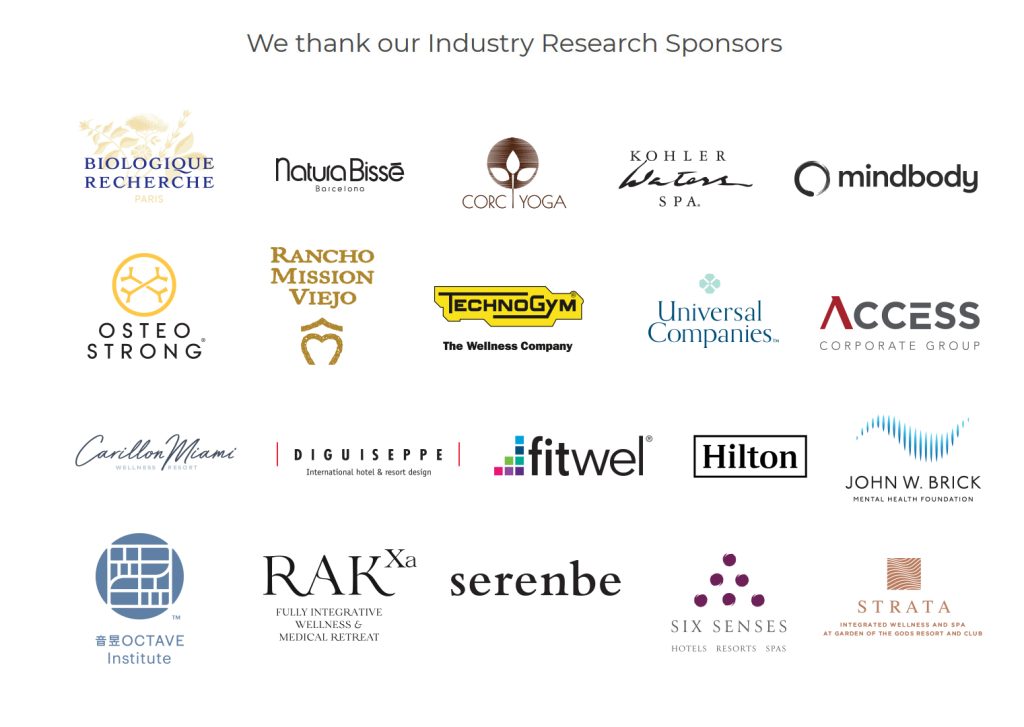The Global Wellness Economy: Country Rankings

The first research to measure the wellness economies of 150 nations. It’s packed with information on national wellness markets from average wellness spend per capita to the wellness market’s contribution to each nation’s overall economy. The report is a companion to GWI’s “The Global Wellness Economy: Looking Beyond COVID,” a complete global update on all 11 sectors of the wellness market, finding that the world wellness economy is worth $4.4 trillion and forecast to reach $7 trillion by 2025.
The Top 20 Wellness Markets
It’s no surprise the world’s most populous countries (e.g., China, India, Indonesia, Brazil, Russia), or the wealthiest (e.g., Switzerland, Australia, Netherlands), or countries that combine size with wealth (e.g., the US, Japan, Germany, the UK, etc.), spend the most on wellness.
The US is by far the largest market, at $1.2 trillion–nearly double the size of the second-largest market, China, at $683 billion. In fact, the US accounts for 28% of the entire global wellness market, while the top ten markets represent 71% of the world total.
Where Do Consumers Spend the Most on Wellness? (Wellness Spending Per Capita)
Consumers in the very wealthiest economies spend the most each year on wellness. The report provides data on how much the wellness market contributes to national GDP (what percentage of the economy it represents). Globally, the wellness economy represents 5.1% of total GDP, roughly 1 in every 20 “dollars” spent by consumers worldwide is on wellness.
For Small, Tourism-Dependent Countries, Wellness Is an Outsized Percentage of Their Economy
It may seem surprising to see Aruba rank in the top 10 for consumer spend on wellness, as it’s not as wealthy as the other ranked countries. This is the tourism effect, where high-spending inbound wellness tourists represent a disproportionate part of the wellness market. The report ranks countries by the ratio of the size of their wellness economy to the size of their total GDP/economy, and the small, tourism-dependent countries really stand out. For those top five nations, the wellness market represents an eye-opening percentage of total GDP: Seychelles (16.5%), Maldives (14.5%), Aruba (11.9%), Costa Rica (11.4%), and St. Lucia (10%). This is a window into the powerful contribution that wellness tourism brings to their economies, but also shows how in these small countries wellness is more of an “export industry” and for the most part out of reach of locals.
The Sectors That Define National Wellness Markets Vary Dramatically
The report reveals how different wellness sectors dominate in different nations. Both worldwide and in most countries, the wellness market is concentrated in three sectors: 1) healthy eating, nutrition, and weight loss; 2) personal care and beauty; and 3) physical activity. These three segments account for more than 60% of the total wellness market.
There is however a wide national and regional variance. In Japan, personal care/beauty represents a much bigger share of wellness spending than in most countries; for China, India, Indonesia, Russia, and Turkey, it’s traditional/complementary medicine; in Germany, it’s wellness tourism, spas and thermal/mineral springs; while in Sub-Saharan Africa, public health and prevention spending dominates.
























































